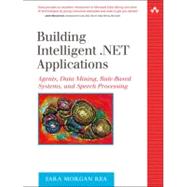
About the Author
Sara Rea is a senior developer for Public Systems Associates, a Baton Rouge–based company that produces legislative software. She is an MCSD and MCDBA and is certified in SQL Server 2000 and VB.NET. She specializes in developing Web-based applications utilizing Microsoft technologies. Since graduating from Louisiana State University in 1993 with a degree in quantitative business analysis, she has been developing software for a variety of industries, including a not-for-profit hospital, a financial company offering mortgages, a retail company selling coffee, and an Application Service Provider.
In 1998 she wrote an article on stress-testing Web sites that was featured on the front cover of MSDN Magazine, formerly named Microsoft Interactive Developer (MIND). Since then she has written articles featured in Enterprise Development and .NET Development. To reference the articles Sara Rea has written, refer to http://www.custsolutions.net. This Web site also features her latest research efforts and is a good resource for readers who want to learn more about enhanced computing.
© Copyright Pearson Education. All rights reserved.
| Foreword | xiii | ||||
| Preface | xv | ||||
| Acknowledgments | xxi | ||||
| About the Author | xxiii | ||||
| Chapter 1: Introduction | 1 | (12) | |||
|
2 | (1) | |||
|
3 | (1) | |||
|
4 | (2) | |||
|
6 | (1) | |||
|
7 | (1) | |||
|
8 | (1) | |||
|
8 | (2) | |||
|
9 | (1) | |||
|
10 | (3) | |||
| Chapter 2: Creating Applications That Talk | 13 | (32) | |||
|
14 | (5) | |||
|
15 | (4) | |||
|
19 | (1) | |||
|
20 | (1) | |||
|
21 | (1) | |||
|
22 | (16) | |||
|
28 | (10) | |||
|
38 | (3) | |||
|
41 | (1) | |||
|
42 | (3) | |||
| Chapter 3: Telephony Applications | 45 | (32) | |||
|
46 | (2) | |||
|
47 | (1) | |||
|
48 | (3) | |||
|
51 | (20) | |||
|
65 | (5) | |||
|
70 | (1) | |||
|
71 | (2) | |||
|
73 | (4) | |||
| Chapter 4: Multimodal Speech Applications | 77 | (32) | |||
|
78 | (1) | |||
|
79 | (2) | |||
|
81 | (21) | |||
|
83 | (19) | |||
|
102 | (1) | |||
|
103 | (1) | |||
|
103 | (3) | |||
|
106 | (3) | |||
| Chapter 5: Data-Mining Predictions | 109 | (32) | |||
|
110 | (3) | |||
|
113 | (15) | |||
|
124 | (4) | |||
|
128 | (11) | |||
|
139 | (2) | |||
| Chapter 6: Applying Data-Mining Predictions | 141 | (30) | |||
|
142 | (3) | |||
|
145 | (12) | |||
|
156 | (1) | |||
|
157 | (9) | |||
|
166 | (3) | |||
|
169 | (2) | |||
| Chapter 7: An Evolving Database | 171 | (30) | |||
|
172 | (3) | |||
|
173 | (2) | |||
|
175 | (1) | |||
|
176 | (22) | |||
|
192 | (6) | |||
|
198 | (3) | |||
| Chapter 8: Building an Agent | 201 | (28) | |||
|
202 | (4) | |||
|
206 | (21) | |||
|
212 | (15) | |||
|
227 | (2) | |||
| Chapter 9: The Future of Enhanced Computing | 229 | (26) | |||
|
230 | (7) | |||
|
237 | (6) | |||
|
241 | (2) | |||
|
243 | (2) | |||
|
244 | (1) | |||
|
245 | (7) | |||
|
249 | (3) | |||
|
252 | (3) | |||
| Glossary | 255 | (10) | |||
| Bibliography | 265 | (6) | |||
| Index | 271 |
The New copy of this book will include any supplemental materials advertised. Please check the title of the book to determine if it should include any access cards, study guides, lab manuals, CDs, etc.
The Used, Rental and eBook copies of this book are not guaranteed to include any supplemental materials. Typically, only the book itself is included. This is true even if the title states it includes any access cards, study guides, lab manuals, CDs, etc.